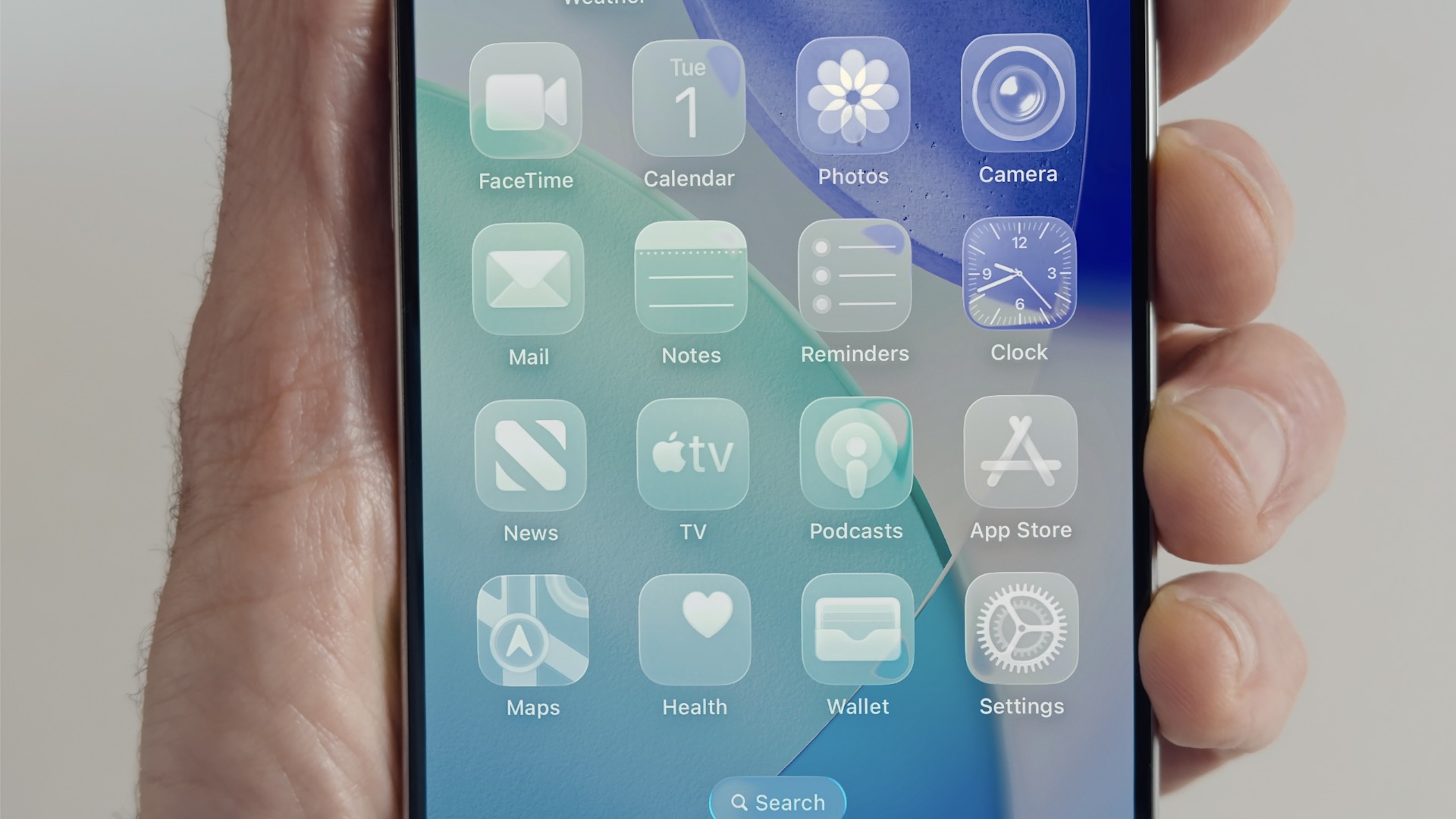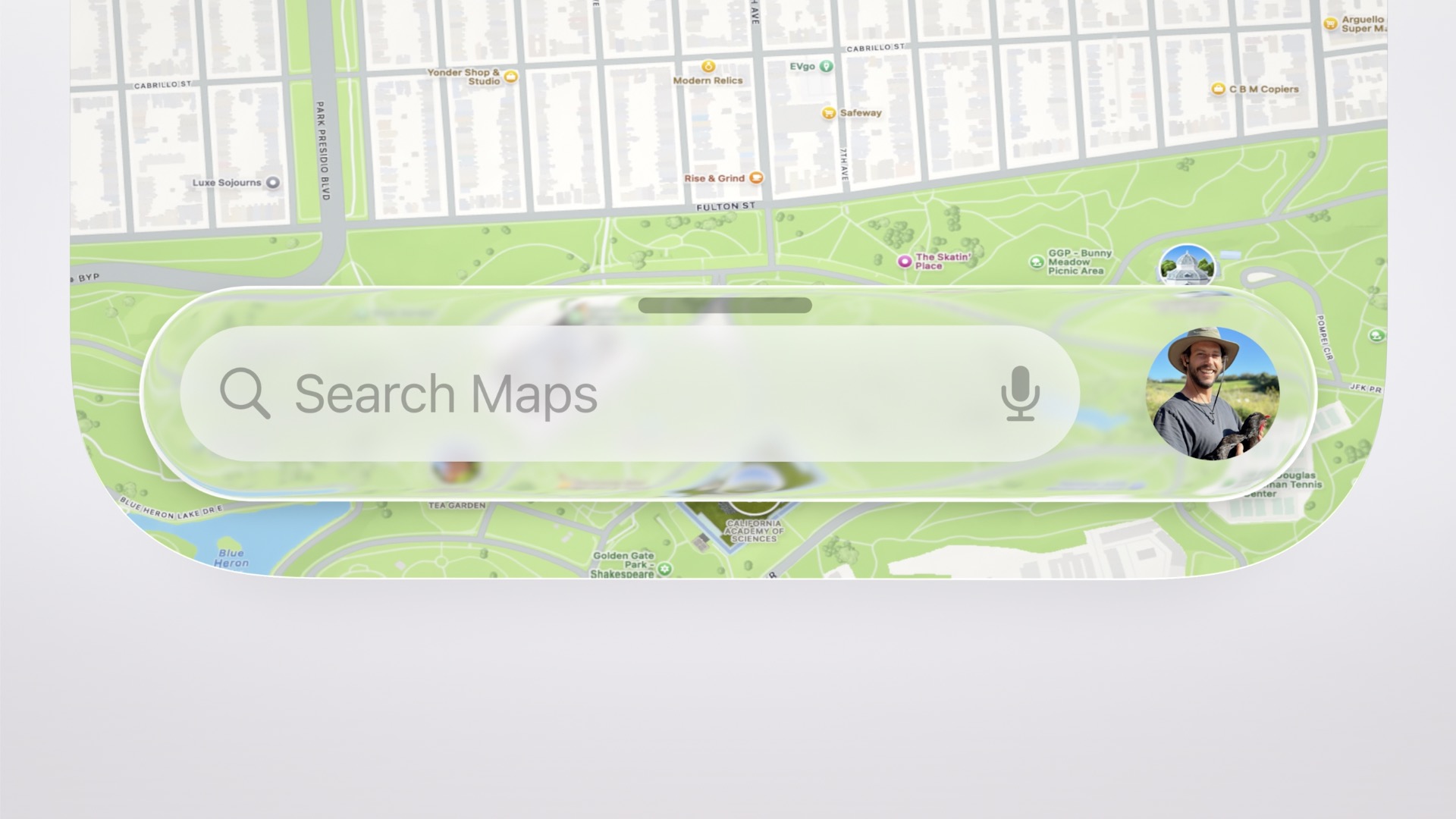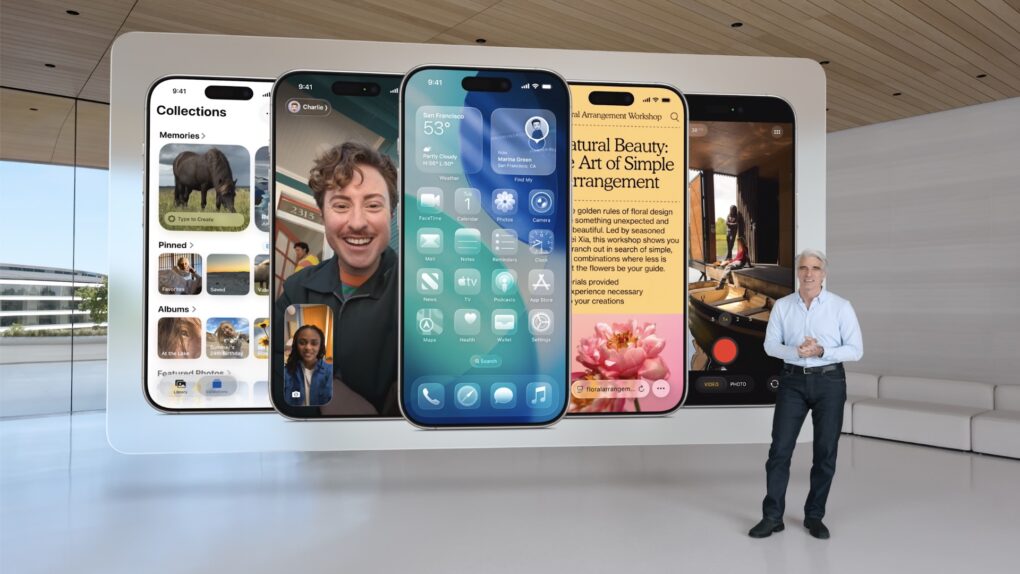For the first time, Apple will unify software design across it various platforms with a new interface design called Liquid Glass. Inspired by visionOS, Liquid Glass is, as its name implies, a translucent and fluid new interface for iPhone, iPad, Mac and other devices in Apple’s ecosystem.
“It’s the kind of project that only comes along about once per decade,” said Craig Federighi, Apple’s senior vice president of software engineering, as he introduced Liquid Glass during Monday’s WWDC25 keynote.
In demos, conference attendees and online viewers got to see “glassy,” translucent menus, panels and icons throughout the system. The new look and feel creates a more immersive and modern visual experience.
Liquid Glass: Apple’s unified user interface design

Photo: Apple
Not only is Liquid Glass the biggest interface redesign since Apple launched iOS 7 in 2013, it’s the first time Apple has tried to unify design across platforms. Apple is famous for encouraging consistent design within a platform (see the Mac’s famous Human Interface Guidelines, for example). And its platforms have long influenced each other. But the company has not until now tried to standardize a look and feel across its entire ecosystem.
Now Apple seeks to unify design language more thoroughly across all platforms, including iOS, iPadOS and macOS. That will create smoother transitions between devices and more consistent user experiences, whether you’re using an iPhone, iPad or Mac. And yet what was familiar shall remain familiar. It’s an ambitious project.
Broadest design update ever
Alan Dye, Apple’s vice president of human interface design, said the new look is Apple’s broadest design update ever.
“For the first time, we’re introducing a universal design across our platforms,” Dye said during an introductory video. “This unified design language creates a more harmonious experience as you move between products, while maintaining the qualities that make each unique.”
The new design extends across all of Apple’s platforms:
- iOS 26
- iPadOS 26
- macOS Tahoe 26
- watchOS 26
- tvOS 26
Behaves like glass in the real world
Dye said Liquid Glass was inspired by the “physicality” of visionOS, which powers Apple’s AR headset. Liquid Glass is meant to behave like glass in the real world, according to Apple.
“It combines the optical qualities of glass with a fluidity only Apple can achieve, as it transforms depending on your content or context,” Dye said. “It lays the foundation for new experiences in the future and, ultimately, it makes even the simplest of interactions more fun and magical.”
Dye said the goal was to make digital interfaces feel natural and alive, from how the interface looks to how it feels as it dynamically responds to touch. The interface “brings more clarity to navigation and controls,” he said.
The UI reflects light and dynamically reacts to movement with mirror-like highlights.
“It responds in real time to your content and your input, creating a lively experience that we think you’ll find truly delightful,” Dye noted.
I was most impressed by Liquid Glass’ expanding tab bars, which grow or shrink as you scroll. This gives you easy access to controls if you need them, then minimizes them out of the way.

Photo: Apple
Enabled by more powerful hardware
More powerful hardware, silicon and graphics technologies enable Liquid Glass’ distinctive look and feel, Apple said. Surrounding content influences elements’ color, which intelligently adapts between light and dark environments. And Liquid Glass uses real-time rendering and dynamically reacts to movement with highlights, according to Apple’s description.
“Apple silicon has become dramatically more powerful, enabling software, materials and experiences we once could only dream of,” said Federighi.
Federighi also noted that Apple wanted to keep UIs consistent across devices. Acknowledging that Apple users are often likely to use more than one Apple device a day, keeping things consistent was an important goal of the Liquid Glass design.
“We are so excited about this beautiful new design and the way it brings greater consistency to our platforms,” Federighi said.


